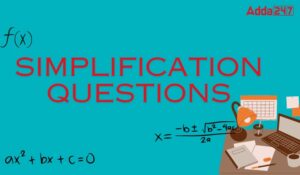Dear Aspirants,
Mixture & alligation Questions for IBPS Clerk Mains 2017
Quantitative Aptitude (Mixture & alligation) is a very important section you must prepare if you are aiming for a job in Bank or Insurance sector. So, these 15 questions can help you practice three very important topics of Quant Section.
Q1. One type of mixture contains 25% of milk the another type of mixture contains 30% of milk. A container is filled with 6 parts of the first mixture and 4 parts of the second mixture. The percentage of milk in the mixture is .
(a) 27%
(b) 31%
(c) 29%
(d) 33%
(e) 30%
Q2. Two gallons of a mixture of spirit and water contains 12% of water. They are added to 3 gallons of another mixture, containing 7% of water, again half of a gallon of water is added to the whole mixture. Find percentage of water in the resulting mixture .
Q3. The ratio of milk to water in three containers of equal capacity is 3 : 2, 7 : 3 and 11 : 4 respectively the three containers are mixed together. What is the ratio of water to milk in final mixture.
(a) 38 : 17
(b) 21 : 11
(c) 61 : 29
(d) 29 : 61
(e) 11 : 21
Q4. One test tube contains some acid and another test tube contains an equal quantity of water. To prepare a solution, 20 l of the acid is poured into the second test tube and then two-third of the so formed solution is taken out from the second tube and poured into the first. If the fluid in the first test tube is four times that in the second, what quantity of the water was initially in the test tube?
(a) 80 l
(b) 60 l
(c) 40 l
(d) 100 l
(e) 120 l
Q5. A bottle is full of Dettol. One-third of it is taken out and then an equal amount of water is poured into the bottle to fill it. The operation is done four times. Find the final ratio of Dettol and water in the bottle.
(a) 13 : 55
(b) 20 : 74
(c) 16 : 65
(d) 10 : 48
(e) 65 : 16
Q6. A chemist has 10 litre of a solution that is 10% nitric acid by volume. He wants to dilute the solution to 4% strength by adding water how many litre of water must be added?
(a) 15
(b) 20
(c) 18
(d) 25
(e) 17
Q7. An alloy contains copper and zinc in the ratio 5 : 3 and another alloy contains copper and tin in the ratio 8 : 5. If equal weights of both the alloys are mixed together, then the weight of tin in the resulting alloy per kg will be
(a) 26/5
(b) 5/26
(c) 7/31
(d) 31/7
(e) None of these
Q8. Alok bought 25 kg of rice at the rate of Rs. 6 per kg and 35 kg of rice at the rate of Rs. 7 per kg. He mixed both type of rice and sold the mixture at the rate of Rs. 6.75 per kg. What was his gain or loss in the transaction?
(a) Rs. 16 gain
(b) Rs. 16 Loss
(c) Rs. 20 gain
(d) Rs. 10 gain
(e) Rs. 10 loss
Q9. An alloy contains zinc and copper in the ratio 5 : 8 and another alloy contains zinc and copper in the ratio 5 : 3. If equal amount of both the alloys are melted together, then the ratio of zinc and copper in the resulting alloy is
(a) 25 : 24
(b) 3 : 8
(c) 103 : 105
(d) 105 : 103
(e) 8 : 3
Q10. A manufacturer has 200 litres of Acid solution which has 15% acid content. How many litres of solution with 30% Acid content may be added so that Acid content in the resulting mixture will be more than 20% but less than 25%
(a) More than 100 litres but less than 300 litres
(b) More than 120 litres but less than 400 litres
(c) More than 100 litres but less than 400 litres
(d) More than 120 litres but less than 300 litres
(e) None of these
Q11. Some amount out of Rs. 6000 was lent out at 10% per annum and the rest amount @ at 20% per annum and thus in 4 years the total interest from both the amounts collected was Rs. 3400. What is the amount which was lent out at 10% per annum?
(a) Rs. 2500
(b) Rs. 2800
(c) Rs. 3200
(d) Rs. 3500
(e) Rs. 3000
Q12. A jar was full of milk. A person used to draw out 20% of the milk from the jar and replaced it with sugar solution. He has repeated the same process 4 times and thus there was only 512 gm of milk left in the jar, the rest part of the jar was filled with the sugar solution. The initial amount of the milk in the jar was:
(a) 1.25 kg
(b) 1 kg
(c) 1.5 kg
(d) Cannot be determined
(e) None of these
Q13. Rs. 69 were divided among 115 students so that each girl gets 50 paise less than each boy, and each boy received twice the paise as each girl received. The no. of girls in the class is:
(a) 92
(b) 42
(c) 33
(d) 23
(e) 102
Q14. The average age of boys in a class is 16.66 years, while the average age of girls is 18.75 years. Thus the average age of all the 40 students of the class is 17.5 years. If the difference between the no. of boys and girls is 8, then the no. of girls in the class is:
(a) 12
(b) 16
(c) 18
(d) Data inadequate
(e) None of these
Q15. The ratio of expenditure and saving is 3 : 2. If the income increases by 15% and the savings increases by 6%, then by how much per cent should be expenditure increases?
(a) 25
(b) 21
(c) 12
(d) 24





 Simplification Questions For Bank Exams ...
Simplification Questions For Bank Exams ...
 Quantity Comparison Questions for Bank E...
Quantity Comparison Questions for Bank E...
 Mixture & Alligation Questions for B...
Mixture & Alligation Questions for B...







